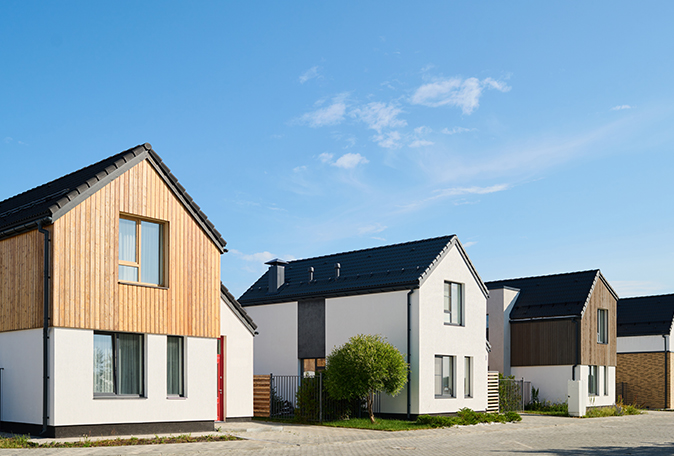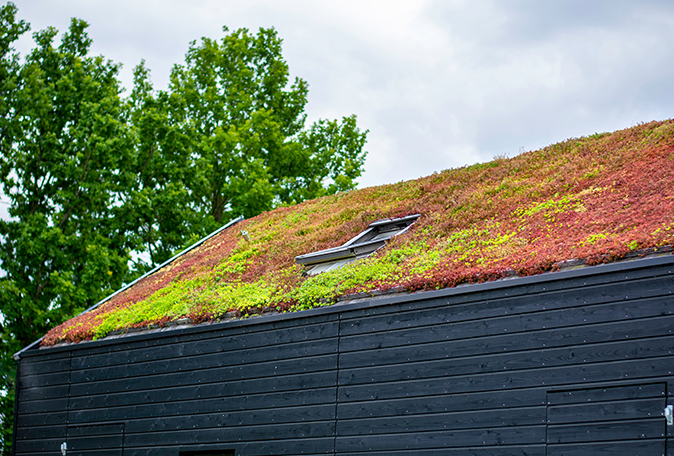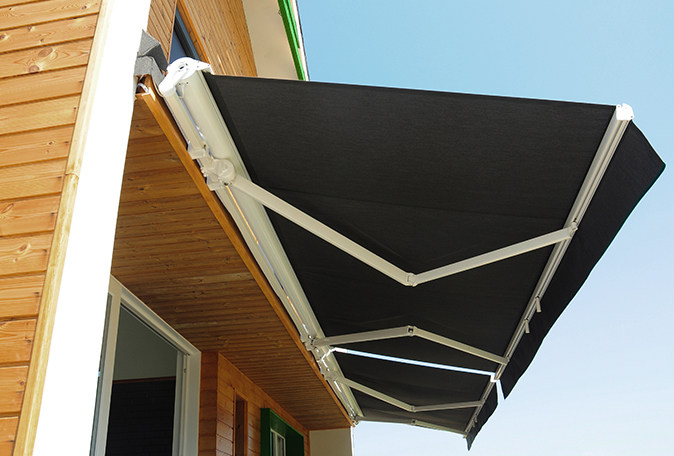Sustainable design can increase your home's value, while decreasing your energy costs and carbon footprint - a win-win situation!
Architecture and design are not simply about aesthetics and style, but they play a fundamental role in shaping our everyday lives, influencing our comfort, health, productivity, and well-being. More significantly, they have a major impact on the environment, with buildings accounting for almost 40% of global greenhouse gas emissions.
However, thoughtful, sustainable architecture and design can counter this. By incorporating energy-efficient features, renewable materials, and smart technologies, we can create homes that are not only beautiful but also kind to the environment, healthy to live in, and cost-effective to maintain. They promote resilience, adaptability, and a more balanced relationship with our planet.
Investing in sustainable design is an investment in our future. It’s about reimagining our living spaces in a way that respects and protects our world, while enhancing our personal lives. It’s a choice that blends aesthetic appeal, environmental responsibility, and long-term economic sense.

Actions
- Create rooms that serve multiple purposes
- Design to optimize daylight & views
- Design using simple shapes, as much as possible
- Find an architect experienced in designing healthier, more sustainable, homes
- Install a green roof
- Install exterior shading (if overheating is a problem)
- Pay extra attention to site orientation
Key Concepts:
1Sustainable Design
Sustainability should always be a priority when it comes to designing homes. Sustainable design involves making conscious decisions to reduce the home’s environmental impact by integrating energy-efficient features, using renewable or recycled materials, and minimizing waste during construction. This can include the utilization of solar panels, green roofs, rainwater collection systems, and low-flow plumbing fixtures. Green building certifications such as LEED and Energy Star can provide guidance on implementing these practices effectively. Incorporating sustainable design involves making choices that lessen environmental impact, increase energy efficiency, and reduce waste. Strategies such as solar energy, green roofs, and sustainable materials are used to meet these goals.
Fact: Green homes consume 25% less energy and 11% less water than conventional homes.
2Energy Efficiency
A well-designed home should minimize energy use for heating, cooling, lighting, and appliances. This is achieved through the strategic use of insulation, energy-efficient appliances, LED lighting, passive solar design (like proper window placement), and potentially renewable energy systems like solar or wind power. Energy efficiency helps reduce the home’s carbon footprint and save on utility bills. Energy efficiency refers to the optimization of energy use for heating, cooling, lighting, and appliances. This can be achieved via insulation, efficient appliances, LED lighting, and renewable energy systems.
Fact: An energy-efficient home can save up to $575 a year on energy bills.

- “The New Net Zero: Leading-Edge Design and Construction of Homes and Buildings for a Renewable Energy Future” by Bill Maclay.
3Healthy Indoor Environment
The health and wellbeing of the occupants is paramount. This is achieved by using non-toxic building materials to improve indoor air quality, and incorporating features like natural lighting and greenery to promote mental wellbeing. Good ventilation systems also ensure that the indoor environment remains fresh and free from pollutants. Using non-toxic materials, natural lighting, and good ventilation can improve indoor air quality and promote mental wellbeing. Green spaces and plants also contribute to a healthy indoor environment.
Fact: Indoor air pollution is often 2-5 times worse than outdoor pollution.
4Resilience
With the increasing impacts of climate change, homes should be designed to withstand local environmental conditions and potential disasters. This could mean using materials that resist wildfires, constructing the home above flood levels, or implementing design features that help keep the home cool during heatwaves. Homes designed for resilience can better withstand environmental conditions and disasters. This involves using durable materials and integrating climate-responsive design features.
Fact: For every $1 spent on hazard mitigation, the U.S. can save $6 in future disaster costs.

5Site Selection and Orientation
The location and positioning of the home are crucial for sustainable design. Orientation influences sunlight exposure, which can impact the home’s heating and cooling requirements. Designers should consider local climate, solar access, and surrounding landscape to optimize for energy efficiency and comfort. The location and positioning of a home impact sunlight exposure, affecting heating and cooling requirements. Consideration of local climate and landscape can optimize energy efficiency.
Fact: Proper home orientation can reduce heating and cooling costs by up to 25%.
- “The Sustainable Sites Handbook: A Complete Guide to the Principles, Strategies, and Best Practices for Sustainable Landscapes” by Meg Calkins.
6Water Efficiency
A sustainable home should also conserve water. This can be achieved by using water-efficient appliances, native landscaping that requires less irrigation, and systems for rainwater collection or greywater reuse. Water conservation can be achieved through efficient appliances, native landscaping, and rainwater collection or greywater reuse systems.
Fact: A water-efficient home can save over 30,000 gallons of water per year.

7Local and Renewable Materials
Using locally sourced, renewable, or recycled building materials reduces the carbon footprint associated with transporting materials and supports local economies. Examples might include bamboo, reclaimed wood, or recycled steel. Using locally sourced or recycled materials reduces the environmental impact and supports local economies. Renewable materials are sustainable and reduce reliance on finite resources.
Fact: Construction and demolition debris accounts for about one-third of all waste generated in the U.S.
8Flexibility and Adaptability
Good design should anticipate the future needs of its occupants. This means creating spaces that can be easily adapted or expanded to accommodate changes, such as growing families or accessibility needs in old age. A well-designed home can easily adapt to the changing needs of its occupants, whether it’s accommodating a growing family or ensuring accessibility in old age.
Fact: Home adaptations for seniors can reduce the risk of falls by up to 23%.

- “The Not So Big House: A Blueprint for the Way We Really Live” by Sarah Susanka, Kira Obolensky.
9Waste Management
Both during construction and in day-to-day living, waste should be minimized. During the building process, this might mean choosing panelized or pre-fabricated construction methods that generate less waste. In the finished home, this could involve designing for easy recycling and composting. Waste minimization involves efficient construction methods and designing for easy recycling and composting in the completed home.
Fact: Construction waste recycling can save up to 4,300 cubic yards of landfill space.
10Social Justice
Sustainable design also considers the wider community. It can play a role in addressing housing affordability, accessibility, and inclusivity. Designs should be mindful of their social and economic impact on the neighborhood and strive to provide decent housing for all. Mindful design considers housing affordability, accessibility, and inclusivity, striving to have a positive social and economic impact on the neighborhood.
Fact: One in four renters in the U.S. spend more than half their income on housing.

Special Considerations for Affordable Housing Projects:
1Affordability
The primary goal is to keep costs low without compromising on quality. This requires using cost-effective building materials, utilizing energy-efficient design to reduce long-term utility costs, and considering the lifecycle costs of building components for maintenance and replacement.
2Sustainability
Energy-efficient appliances, insulation, and renewable energy systems such as solar panels can drastically reduce utility bills, making the housing more affordable in the long run. Incorporating water-saving devices and features for solid waste management can further enhance sustainability and affordability.
3Location and Accessibility
Affordable housing should be located near essential amenities like schools, healthcare, and public transportation, to reduce living costs for residents. The design should ensure physical accessibility for all, including those with mobility challenges.
4Community-Oriented Design
The design should foster a sense of community and belonging. This can be achieved by providing shared spaces such as community kitchens, gardens, or courtyards that encourage social interaction among residents.
5Resilience
Affordable housing should be designed with resilience in mind, considering local climate and potential disaster risks. This might involve building above flood levels, using fire-resistant materials, or designing for passive cooling in hot climates.








